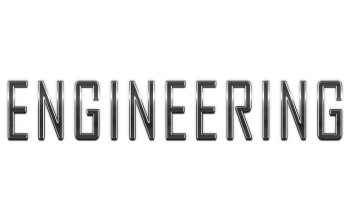When a vehicle ends up as a salvage title due to damage or theft, its journey back to the road can seem daunting. However, with a structured approach and adherence to state-specific regulations, this legal blemish can be transformed into a rebuilt title, restoring the car’s operational status and enhancing its resale value. This article delves into the intricacies of the salvage title transfer process, outlining the steps required for a successful conversion. From understanding the costs involved to repairing the vehicle with certified professionals, we explore how to meet DMV requirements and secure the necessary insurance to ensure your car aligns with safety and legal standards. Furthermore, we provide insights into maximizing your vehicle’s marketability post-rebranding, helping you navigate the complex landscape of car title laws and branding regulations effectively. Whether you’re an owner looking to rehabilitate a salvaged vehicle or a buyer in the market for a rebuilt title car, this guide is tailored to equip you with the knowledge needed for a smooth transaction.
- Navigating Salvage Title Transfer: Understanding the Process and Costs
- – Key points: Salvage title transfer procedures, documentation required, state-specific laws, and average costs associated with the conversion from a salvage to a rebuilt title.
- Repairing a Totaled Car Title: Documentation and Compliance for Rebuilding
- – Key points: Detailed steps on how to document repairs, the importance of using qualified repair professionals, necessary inspections, and submission of a rebuilt title application to the DMV.
Navigating Salvage Title Transfer: Understanding the Process and Costs

Navigating the salvage title transfer process requires a clear understanding of both the procedural steps and the associated costs. A vehicle is branded with a salvage title after it has been damaged to an extent that the insurance company deems it a total loss. To convert this salvage title to a rebuilt title, the owner must first undergo a thorough inspection, which assesses the integrity of the repairs made to the vehicle. This inspection ensures that the vehicle’s structural and safety components are restored to acceptable standards. Once the vehicle passes this inspection, the owner can proceed with the application for a rebuilt title. It’s crucial to adhere to car title branding laws specific to your state, as each jurisdiction may have unique requirements. The cost of the salvage title conversion process varies by state; however, it generally includes fees for the inspection, application, and registration. Rebuilt title insurance is another factor to consider, as this can protect the owner from future liability should the salvage history of the vehicle affect its resale value or cause complications post-transfer.
Understanding the costs involved in rebuilding a totaled vehicle is essential for budgeting and ensuring compliance with car title laws by state. The process begins with the necessary repairs, which must be meticulously documented to accompany the rebuilt title application. After the application is approved and the fees are paid, the vehicle can undergo a final registration process through the Department of Motor Vehicles (DMV). This final step confirms that the vehicle meets all safety standards and can legally return to the road. The effort to rebrand a salvage titled car from a liability into a marketable asset is not only a legal necessity but also enhances the vehicle’s resale value by erasing its salvage title designation, provided the owner follows all the steps correctly.
– Key points: Salvage title transfer procedures, documentation required, state-specific laws, and average costs associated with the conversion from a salvage to a rebuilt title.

The process of transferring a salvage title to a rebuilt title involves meticulous documentation and adherence to state-specific regulations. Prospective owners must first determine the extent of damage and ensure all repairs are completed according to official guidelines. The salvage title transfer begins with an inspection by an authorized body, which verifies that the vehicle’s repairs meet the necessary standards. Subsequently, vehicle owners must submit a rebuilt title application, accompanied by detailed records of the repair process, including estimates, receipts, and a statement describing the work performed. These documents serve as evidence that the car has been restored to a safe and functional condition.
State laws govern car title branding, with variations in requirements and processes for clearing a salvage title across different jurisdictions. Owners must familiarize themselves with their state’s regulations to comply with all legal stipulations. Typically, this includes a thorough assessment by the Department of Motor Vehicles (DMV), which scrutinizes the vehicle’s repairs against a set criteria to ensure safety and compliance. After passing these DMV salvage title requirements, the car can be re-registered for salvage vehicles. The entire process is essential for not only legal operation on public roads but also for enhancing the resale value of the vehicle. Rebuilt title insurance policies are available to protect both the owner and potential buyers against future claims, which is a crucial aspect when considering the car’s past. The average costs associated with this conversion can vary significantly based on factors such as the severity of the damage, the cost of repairs, and state fees. Prospective owners should budget for these expenses to successfully complete the salvage title conversion process.
Repairing a Totaled Car Title: Documentation and Compliance for Rebuilding

When embarking on the process of repairing a car that has been deemed a total loss, or one with a salvage title, it’s crucial to navigate the legal and procedural framework to convert the title from ‘salvage’ to ‘rebuilt.’ The initial step involves a thorough inspection by an authorized entity to ascertain that the vehicle’s repairs meet the required standards. This inspection is essential for ensuring the vehicle’s integrity and roadworthiness post-repair. Once the vehicle passes this scrutiny, owners can proceed with the application for a rebuilt title. This application must be accompanied by detailed documentation substantiating the repairs completed, including receipts, invoices, and part manifests that verify the authenticity of the components used in the reconstruction process.
The process of salvage title transfer is standardized yet varies slightly across different states, adhering to their respective car title laws. These laws dictate the necessary steps for clearing a salvage title, which often include a strict assessment of the vehicle’s repairs and compliance with state regulations. The cost associated with this conversion is typically reflective of the labor and materials used in the rebuilding process, as well as any applicable state fees. Prospective buyers must consider these factors when evaluating the resale value of rebuilt title vehicles. It’s imperative to research the specific requirements and costs for your state before beginning the process, as this will inform your decision-making and budgeting for rebuilding totaled vehicles. Additionally, securing rebuilt title insurance can safeguard both current and future owners from potential liability issues related to the vehicle’s past. This coverage underscores the importance of following the correct procedures and adhering to car title branding laws to ensure a clean and marketable title post-rebuilding.
– Key points: Detailed steps on how to document repairs, the importance of using qualified repair professionals, necessary inspections, and submission of a rebuilt title application to the DMV.

When a vehicle has been deemed a salvage or ‘total loss’ by an insurance company due to damage that exceeds a certain percentage of its value, the journey towards restoring it to a rebuilt title begins with meticulous documentation. The first step in this process is to conduct a comprehensive inspection of the vehicle, which must be carried out by a qualified professional who can attest to the extent and quality of repairs made. This inspection ensures that all necessary repairs have been performed according to manufacturer specifications and that the vehicle is safe for road use.
Owners must then compile detailed records of the repairs conducted, including photographs, receipts, and repair estimates or invoices. These documents serve as evidence that the vehicle has been properly restored. It’s crucial to work with qualified repair professionals who can provide a clear narrative of the repair process, which will be necessary when submitting the rebuilt title application to the Department of Motor Vehicles (DMV). The application process involves providing detailed information about the salvage title transfer, the extent of repairs made, and ensuring compliance with car title laws by state. These laws vary by jurisdiction, so it’s essential to familiarize oneself with the specific requirements in your area. After passing the necessary DMV salvage title requirements, including a re-inspection if required, the vehicle can be registered with a rebuilt title. This registration process confirms that the car has been brought up to safety standards and is legally roadworthy.
In addition to adhering to the legal and inspection requirements, obtaining rebuiilt title insurance is highly recommended. This insurance can provide financial protection should the vehicle be involved in another incident post-repair. The cost of salvage title conversion, including all necessary inspections, repairs, and insurance, should be considered when assessing the overall investment required for this process. It’s also important to note that once a vehicle has been rebranded with a rebuilt title, its resale value may be affected due to the history of being classified as salvage. Prospective buyers will often seek clarity on a vehicle’s past, which can influence its marketability and price. Understanding and navigating car title branding laws is key to successfully transferring a salvage title to a rebuilt title and enhancing the vehicle’s resale value. By following these steps and ensuring all regulations are met, owners can successfully rebuild totaled vehicles and return them to the road with confidence.
Navigating the process of converting a salvage title to a rebuilt title is a multifaceted endeavor that hinges on adherence to state-specific car title laws and regulations. The journey involves careful documentation, compliance with repair standards, and thorough inspections to ensure the vehicle’s safety and roadworthiness. Rebuilt title insurance can offer peace of mind during this process, mitigating potential risks associated with salvage title transfer. Understanding the costs involved in salvage title conversion is crucial for budgeting effectively. By following the outlined steps for repairing a totaled car title and adhering to salvage title branding laws, vehicle owners can successfully clear their salvage title, transforming their vehicle into one with a rebuilt title. This not only allows for legal operation on public roads but also enhances the resale value of the rehabilitated vehicle. With diligence and attention to detail, the once-tottaled car can be revitalized and returned to the road safely and legally, ready to regain its marketable status.



